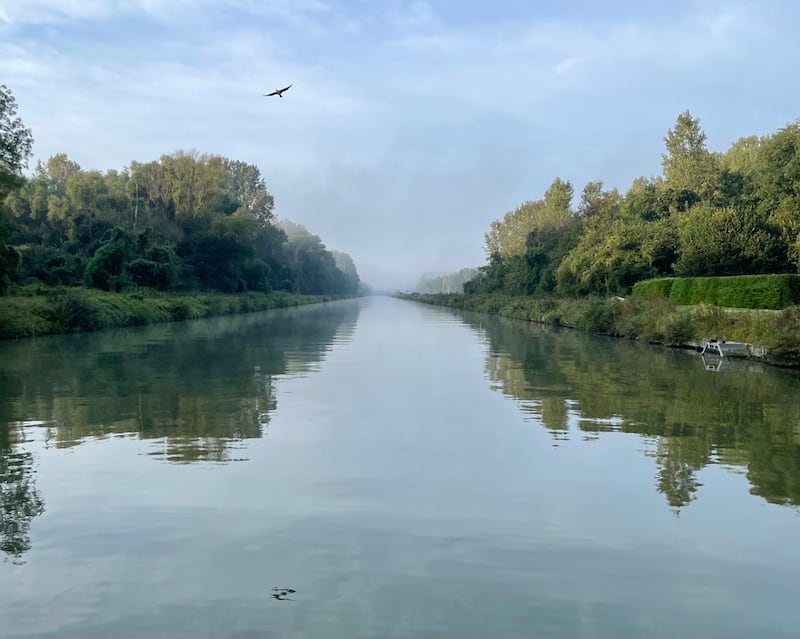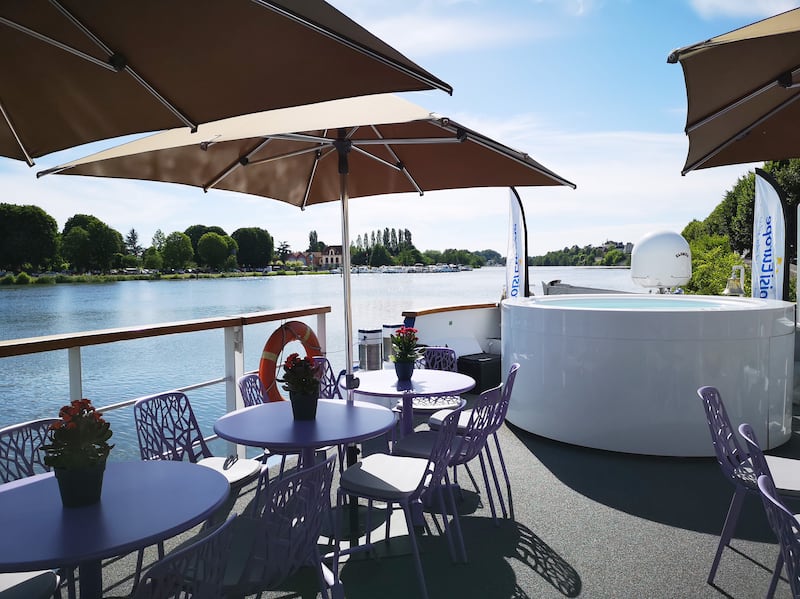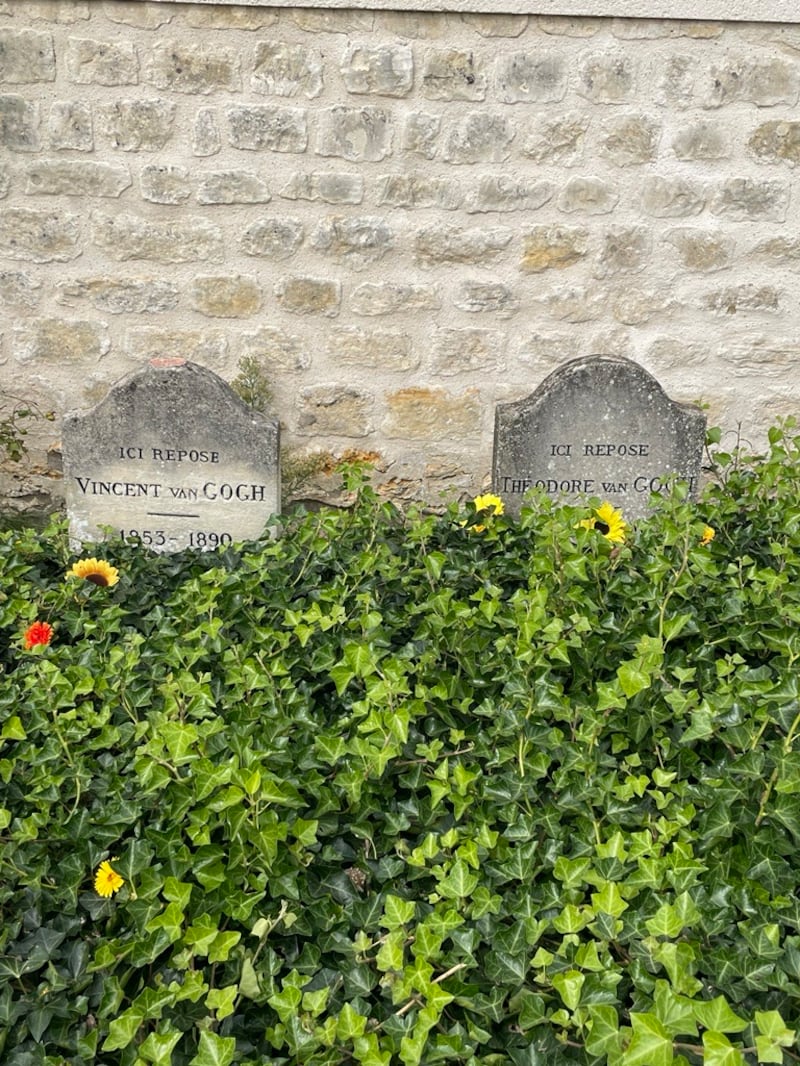There’s something truly wondrous about the countryside of northern France, a pleasant stillness you don’t get in many other places.
I’m about to embark on a new voyage from international river cruise company CroisiEurope. This is my first ever river cruise, so I’m very excited and I honestly have no idea what to expect. I’ve also never been to France before, so this really is a new experience all round for me.

Pont L’Eveque, our starting point, is stunning in the sunlight of the early evening. A barge cruise is a little different to a regular cruise. Covering a lot less distance, the holiday has much more of a leisurely feel. Barge cruises are also a lot smaller with typically less than 30 people compared to the average 200 people of a typical river cruise. Our boat, The MS Raymonde, sleeps 22 guests in comfortable double cabins and will be my cosy home for the next four days.
Our first excursion is to Noyon Cathedral, just north of Pont L’Eveque. Noyon was historically a very important ecclesiastical location, and the cathedral is still a Roman Catholic church. Seeing the cathedral at night is truly something else. Built in the 12th century, it’s very different from the English cathedrals I’ve seen and feels much smaller inside.

We spend the next morning sailing calmly down the Canal l’Oise. The countryside is picturesque and staff on board the boat keep us entertained with facts about the area. The captain also answers our questions about the boat itself and tells us how the various locks we go through work. Although the upper deck has some sun loungers, it’s not quite warm enough for sunbathing. But – wrapped up in a coat – I still take advantage of the crisp autumn sun.

Our excursion for today is to the Château de Compiègne, one of the three largest royal and imperial residences in France, along with Versailles and Fontainebleau. Château de Compiègne was originally built for Louis XV and then restored by Napoleon. Even before the Château was built, Compiègne was a favourite residence of the royals. Compiègne Forest was the perfect grounds for royal hunts which is evident in the Château’s decor. The walls are adorned with several paintings depicting hunt scenes and there is plenty of taxidermy on display as well.
Next stop on our excursion is the Musée de l’Armistice – the Armistice Museum. The Museum is in the Compiègne Forest, near where the Armistice that formally ended World War One was signed. The museum itself is rather small, as museums go, but very informative. We see a replica of the train car the Armistice was signed in, which is set up exactly how it would’ve been at the time, plus some artefacts from the war as well.

By the time we make it back to the boat I’m ready to eat. Every meal gets better and better on the MS Raymond, featuring the very best of French cuisine – including dishes with quiche, guinea fowl and pork tenderloin. Plus, we have a special treat to go along with dessert. It’s my birthday, and the chef has made a lovely birthday cake as a surprise.
Grand buildings are a feature of this trip and our next stop, Château de Chantilly, doesn’t disappoint. The Château is the work of Henri d’Orléans, Duke of Aumale and son of the last King of France, Louis-Phillipe. Henri d’Orléans gifted the Château to the Institut de France in 1886 and it has remained in their possession and unchanged ever since.

The Duke of Aumale was known as one of the greatest collectors of his time, something made evident in the Condé Museum, made up of an art gallery featuring three Raphael paintings and a library with more than 20,000 books and manuscripts.
One of the most treasured items on display is the Condé Diamond, 9.01 carat and a gorgeous pale pink colour. Originally from the Kollur mines in Southern India, the diamond was sold to King Louis XIII of France, who in turn gifted it to Louis II de Bourbon, prince of Condé (where the diamond gets its name from). It’s never been set, and its only adornment is a row of smaller white diamonds around the edge.

Back on the barge, we have another surprise in store. A member of the le Confrérie des Chevaliers Fouetteurs (the brotherhood of whipping knights) demonstrates how to make authentic Chantilly cream by hand – which turns out to be very hard. The Brotherhood (despite the name, both men and women are inducted) is dedicated to protecting and promoting the heritage of Chantilly cream – a French classic of cream flavoured with vanilla and sugar.
However, the origin of Chantilly cream is hotly debated and somewhat shrouded in mystery. Some say it was introduced to France by Catherine de Medici, who bought the whipping technique from Italy. Others say a man named François Vatel presented the cream to Louis XIV before taking the technique to the Château and making it famous.

So far, the trip has been a fascinating journey through history, but the best is yet to come. On our last day, we visit Auvers-sur-Oise, where Dutch post-impressionist artist Vincent van Gogh spent his final days. Van Gogh moved to the village to be closer to his doctor, Dr Paul Garchet, and his brother, Theodore.
The official cause of his death was suicide – Van Gogh appeared to have shot himself in the chest with a revolver, dying two days later. However our tour guide tells us that some people believe the artist was murdered by some young men he had been having problems with – hence the shot in the chest and not somewhere more fatal.
We have a tour round the village, seeing the various places van Gogh used to frequent such as his favourite cafe. During his time in the village (70 days), the great artist painted an impressive 76 paintings including some of his most famous, such as one of the local church.
We also pay a visit to Van Gogh’s grave, which he shares with his brother Theodore. Ivy from the garden of Van Gogh’s doctor was planted over the grave to symbolise the unbreakable bond between the two brothers.

Our final stop is the Absinthe Museum. The tipple loved by French artists of the fin-de-siècle era is aniseed flavoured and can be as divisive as Marmite. However, after sipping a sample I discover it’s not as bad as I imagine, and learning about the history of absinthe as well as how to properly make it is definitely something I won’t forget in a while.
But to be honest, this whole trip has left me with some surprising and lasting memories. I’d never considered myself to be a cruise person or a Francophile, but a gentle barge journey along some of the country’s prettiest canals has left me a fan of both.
How to plan your trip
A six-night Oise Valley hotel barge cruise costs from £2,995 per person based on 2024 departures between April and October. Price includes flights from London Gatwick, transfers, all meals and drinks, entertainment, excursions, use of onboard bicycles, WiFi and port fees. Call 01756 691269 or visit croisieurope.co.uk.


